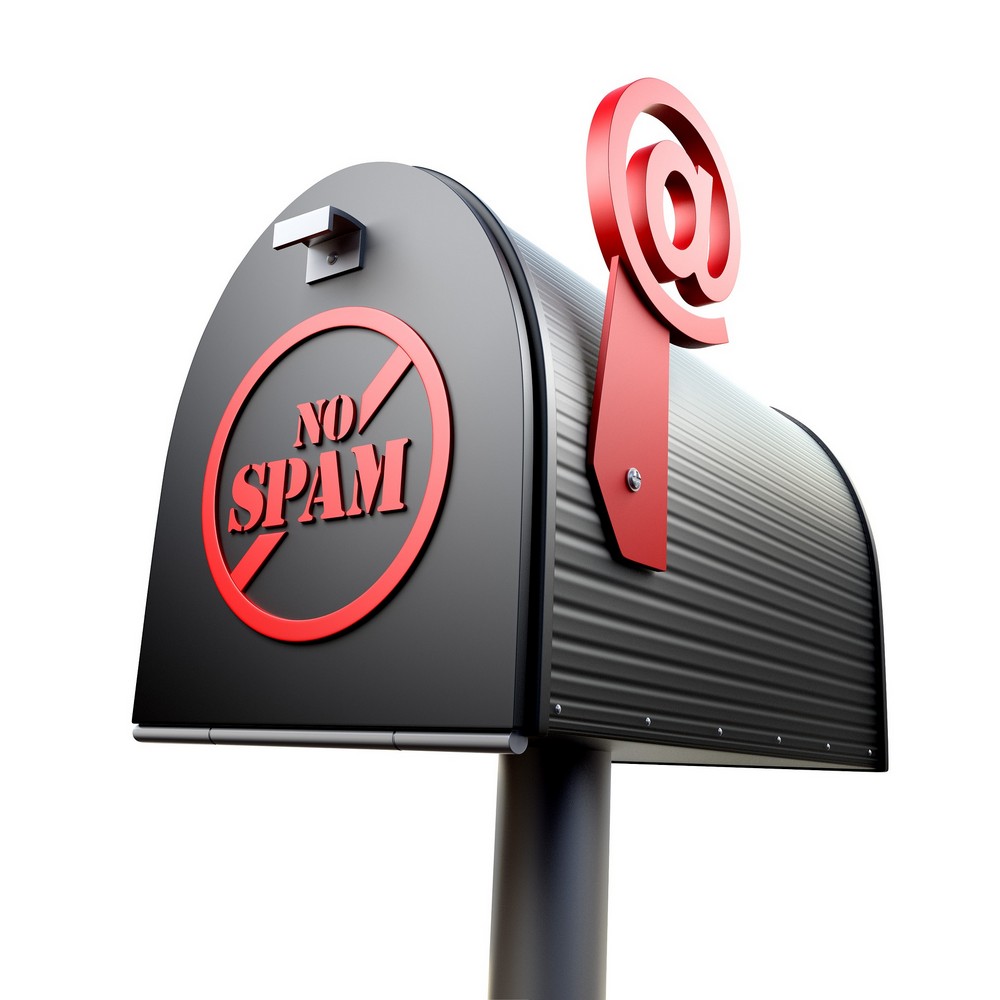15 Email Statistics That Are Shaping the Future
Emails have been used as a form of communication ever since the 1970s. Even today, it remains effective. That is why it is considered as an important part of every marketing strategy. The email marketing industry has been evolving throughout the years. Here are some email marketing stats that you should be aware of:
Email Spam Statistics
 1. At least 21% of email recipients claim that they received Spam emails.
1. At least 21% of email recipients claim that they received Spam emails.
Although they are aware that they are not spam. The fact is, 69% of email recipients quickly judged that a particular email is a spam based on its subject line alone.
2. Out of the 12 major blacklists, only one of them appears to have an IP address.
About 43% of email recipients will quickly decide that an email is a spam based on the email address in “from”.
Subject lines can be critical when sending emails. To know how do experts send their emails, AWeber examined 1,000 emails from the best marketers and they found out that nearly 82% of marketers make sure that when sending emails, its subject lines should only contain 60 characters or less. The reason behind this is that most email service providers have a limitation on the length of their subject line. Once it reaches its allowable length, the remaining characters will not be shown. The study also showed that the average characters on each subject line are 43.85 characters. This means that it is important to make sure that the subject lines on your emails have less than 60 characters.
If you want to become an effective marketer, then it is vital to make sure that your subject lines are not too long. You should also understand that people who are viewing your content on their mobile devices can easily get irritated in reading long subject lines due to the small screen size.
3. Nearly 35% of email recipients will open their emails depending on their subject line alone.
 Most of us do not immediately open every email that we receive.
Most of us do not immediately open every email that we receive.
The number of emails that will be sent and received is predicted to reach over 347 billion by 2020. Based on the data gathered by Statista, there is a steady increase in the number of emails that will be sent out and received. In 2018, the number of emails was 269 billion and it is projected that this goes over 347 billion by 2022. This is a rapid increase considering the current high volume of emails.
These figures only show that there is an increase in the number of people who are using their emails. Generally, this is a good thing. However, since the number of emails has grown rapidly, then it will be more difficult for your message to stand out. Hence, it is important to create an interesting subject line that can entice your audience. The body content must also include relevant information, so the users won’t get discouraged when they open your email.
4. At least 80% of social network members constantly obtained unwanted emails or invitations.
How often do you send your email? Nearly 73% of email marketers choose to send their emails every week. Most marketers are wondering how often should they send their emails. Based on the study of the Manifest, several marketers choose to send emails to their customers weekly or more often. Perhaps sending emails every day is not truly bad. At least 32% of the participants from the study revealed that they send emails daily. But you should also remember that people don’t usually read emails that don’t attract them. This is why, if you want to send emails more often, then there must be a valid reason for doing it.
Email Delivery and Email Opening Statistics
5. Not all emails on an email list are delivered. Only 44% of these emails are sent out by ISPs.
What is your purpose in sending those emails? Well, 66% of marketers reveals that they want to improve their engagement. The fact is, they consider this as their top priority. In 2018, Adestra and Ascend2 conducted research on this and revealed some of its relevant trends. First, it showed that at least 66% of its respondents express their desire to increase their email marketing engagement. That is why it is not a surprise that 46% of the participants said that a lack of email engagement could be a huge hindrance to their success.
Sometimes it is hard to grab people’s attention. If you really want to obtain better engagement, then you should not only depend on email marketing. Rather, you could do some research to know what are the other ways of engaging your audience. You should remember that improving your engagement also means increasing your returns. This can help in motivating yourself to look for some effective ways of improving your engagement. Modern technology can help you in accomplishing this goal. You can use some reliable data in evaluating and determining the factors that can make people attracted to your emails.
6. If you are always on the go, then it would be easier for you to check emails on your mobile device. 35% of business professionals are doing this.

Which would you prefer, opening your email on your desktop or on your phone?
Do you know that most people spend at least 2.5 hours a day checking their personal emails while they are at their workplace? Adobe made a study on this and found out that while at work, white-collar employees spend at least 2.5 hours checking their personal emails. Moreover, they spend more time managing their work-related emails. On the other hand, lots of people would check their personal emails before getting out of bed or before going to work.
It seems that checking emails has been a part of their daily activity. They open all types of emails whether it is a personal email or a work-related email. This means that you can send personal emails even if it is business hours. But be wary that people will only scan these emails and most likely, they won’t respond to it quickly.
7. Young subscribers especially those who are 25 years old and below prefer to receive SMS than email.
Different people have different preferences. How about you?
8. Are you wondering what platform do most people use when opening their emails? The fact is, at least 56% of emails are opened on iPhones or in Gmail.
Most marketers want to know which platforms are being used by most people in reading their emails. Litmus conducted a study on this and discovered that two of the most popular email clients are Gmail and iPhone.
Based on these findings, it is apparent that most people read their emails through their mobile devices. Since a large part of your users will be using this method, then it is only practical to make sure that your message is easier to open in the mobile devices. This means that you have to avoid long paragraphs as well as large image files.
With regards to Gmail, you need to know what are the features that people could use on their Gmail accounts. For instance, the Snooze function could make the users remove your email from their inboxes. To prevent this, you could include a sense of urgency in your email, for instance, providing them with limited-time offers.
Email Address and Preview Panel Statistics
9. Nearly 30% of subscribers change their email addresses every year.
Do you always change your email address? Well, for whatever reason, nearly 30% of subscribers choose to change their email addresses yearly.
10. Some people can’t wait for a year, 17% of Americans prefer to create a new email address every 6 months.
Most people tend to have more than one email account. The fact is, the ratio of the average number of email accounts for every user is 1.75 and it keeps on growing. This is what the Radicati Group, a market research specialist, has discovered. Based on the report, this figure could increase to 1.86 by 2022. Based on the research, the reason why people have different email accounts is that they use it for various purposes, for instance, purchasing items online or connecting with their friends and family.
Since most people regularly create new email addresses for different purposes, then as a marketer you have to review your email list and remove old email addresses. In addition, you could encourage your consumers to keep you updated with their latest email addresses by providing them some incentives. For instance, you could tell them that they can’t enjoy special offers if they don’t give you their most recent email addresses.
11. At least 84% of email recipients who are between 18 to 34 are using the preview panel.
The email preview panel is very useful to everyone.
Email Marketing Statistics
12. Each year, at least one purchase is being made by 44% of email recipients that receive promotional emails.
 Email marketing can be very effective in promoting your products and services.
Email marketing can be very effective in promoting your products and services.
Another interesting fact is that at least 68% of millennials reveal that their purchase decisions are being influenced by promotional emails. In 2017, Fluent studied the different methods of marketing for millennials and how it differs from other age groups. They examine the effects of various promotional methods including sending promotional campaigns through emails or text messages, placing ads on entertainment and news websites. This can help them identify how these methods can affect their purchasing decisions.
Based on the report, of all the methods being used, the most effective one is the promotional emails. Two out of three millennials reveal that those emails have influenced most of their purchasing decisions. Furthermore, 13% of them said that promotional emails have always motivated them.
So, how does this result affect the marketers? Keep in mind that millennials are easily get attracted to promotional emails. Fluent discovered that promotional emails are 10% more effective in motivating millennials to make a purchase compared to those that are sent to older age groups. For better results, you could use extremely personalized emails.
13. If you are a marketer, one of the best ways to increase your ROI is to optimize your emails for image blocking.
Email marketing can greatly help in increasing your Return on Investment. It can give you an ROI of 38 to 1. Based on the report of Litmus, brands could earn 38 times the amount that they’ve put on in their business. This is the highest return on investments that you could earn as a marketer. This means that you should not easily give up on your email marketing campaign, most especially if they can’t produce instant high returns.
14. If you can send an email right after the shopping cart abandonment, then this could increase your conversions by 6.33%.
 Does shopping cart abandonment discourage you as a marketer? Well, there’s no need to get frustrated right away.
Does shopping cart abandonment discourage you as a marketer? Well, there’s no need to get frustrated right away.
There are different reasons why people abandon their online shopping carts. Perhaps, they think that the shipping costs are too expensive. While some refuse to create a new account to wrap up the checkout process.
But based on the data gathered by the SaleCycle, once the user gets an email within an hour from abandoning their shopping cart, conversions could rise up by as much as 6.33%. As a marketer, you should not quickly assume that you can’t convince shoppers to finish their purchases. Sending a simple email could be the best solution. This can help the consumer determine that they truly want to purchase those products after all.
15. Consumers who purchase products from email offers will likely spend more than 138% than those who did not receive any.
We receive different kinds of emails each day. However, not all people like the messages that are included in those emails. The fact is, at least 55% of consumers want emails that contain significant products and offers. It is not ideal that you have to send a single email to all your prospective customers. Based on the study conducted by Liveclicker, personalized marketing can create a great impact. The study revealed that at least 55% of consumers like their messages to be more personalized. It should include products that match their personal preferences.
For marketers, they must try to dig deeper in order to determine the best ways of sending targeted emails depending on the consumers’ previous purchases, behavior, as well as other aspects that match the consumers’ preferences. By doing this, there are lesser chances that people will get irritated by the tremendous marketing emails that they receive each day.
We hope that this article has helped you in making the most effective strategies for your email marketing so you can obtain more engagement. So, what can you say about the future of email marketing?
